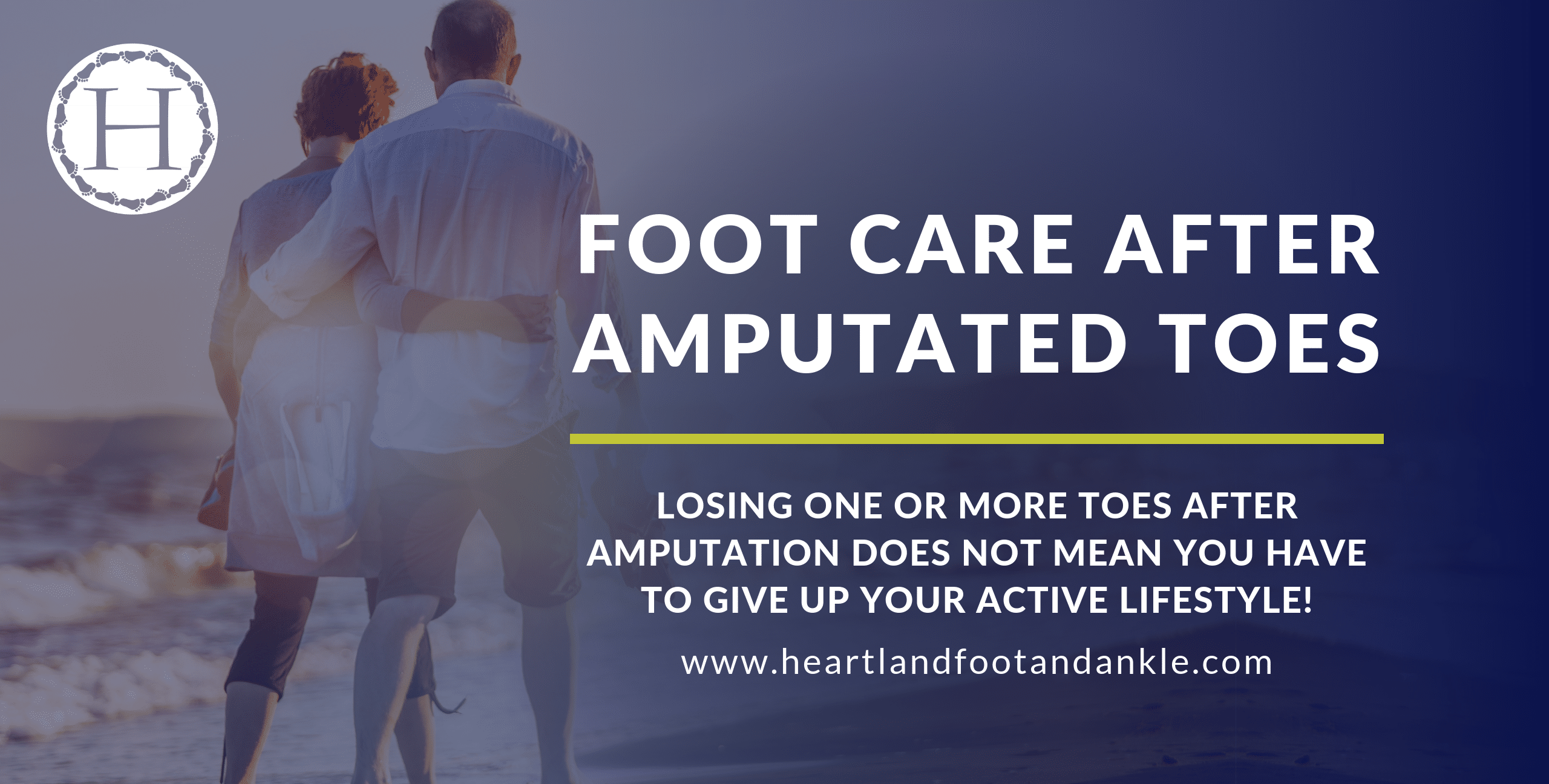FOOT CARE AFTER AMPUTATED TOES
Diabetes is on the rise in the United States—and with it, the number of diabetes-related non-traumatic amputations. In fact, by some estimates that number is closing on almost 100,000 per year, in America alone.
At Heartland Foot & Ankle, we’ll do everything we can to prevent toe and foot amputations. Our advanced wound care services are tailored to bring about lower limb wound healing as quickly as possible, reverse or contain any infections, and prevent the development of gangrene.
However, sometimes amputation cannot be avoided, if it’s the only way to stop the spread of gangrene and save your life.
Amputation of toes, or part of a foot, will of course have life-long consequences. However, it does not have to mean the end of a healthy, active life.

How Missing Toes Affect Your Life
Losing one or more toes does not necessarily mean that you won’t be able to walk or even run again. However, it will adversely affect your balance and stability, and potentially change your walking biomechanics.
The big toe carries the heaviest load during walking and running, and it’s also the toe that is most likely to be amputated due to infection. It’s the toe you push off from during your stride, and it has to carry about 40 percent of the total force load on your feet overall.
As a result, losing your big toe (as well as others) will make your walking and running gait less efficient in general, resulting in a slower and choppier stride—although this can be compensated for with fillers (more on that in a moment) and physical therapy.
Furthermore, missing toes may make it difficult to fit comfortably into shoes and increases your risk of subsequent ulceration and amputation due to rubbing of feet inside the shoes. Remaining toes may even begin to shift position in the absence of missing neighbors.
Toe Fillers
One way we can help you with these problems is by providing toe fillers.
Toe fillers are special shoe inserts that are designed for people who have lost one or more toes to amputation. We have the following types available:
- Hallux amputation toe filler. This is for people who have only had their big (great) toe amputated. A hallux toe filler can help you regain a natural walking gait and reduce discomfort. It also reduces pressure on the remaining four toes and helps prevent them from drifting out of their natural alignment.
- Trans-metatarsal amputation toe filler. This type of insert is for people who have lost all their toes due to amputation. The filler protects the shoe from creasing and collapse at the toes, as well as controls abnormal motion of your foot. The right trans-metatarsal amputation filler can often eliminate your need for a costlier custom-made shoe.
In some cases, toe fillers and orthotics may not be sufficient, and you’ll need a full custom shoe to give you the balance and stability you require.
Helping You on the Road to Recovery
Losing one or more toes is not an easy adjustment—physically or emotionally. Phantom pain and itchiness where the toes used to be are common for up to a year after the amputation. And as we mentioned above, it may be a struggle to regain balance, stability, and confidence with your stride.
However, we have also seen countless patients of ours who have been able to regain full activity and enjoy a healthy lifestyle—including running—after toe amputations. And we will do everything we can to make sure you get the treatment, preventative care, and support you need in order to achieve your goals.
To schedule an appointment with the team at Heartland Foot & Ankle Associates in Bloomington, IL, please call (309) 661-9975 today.

